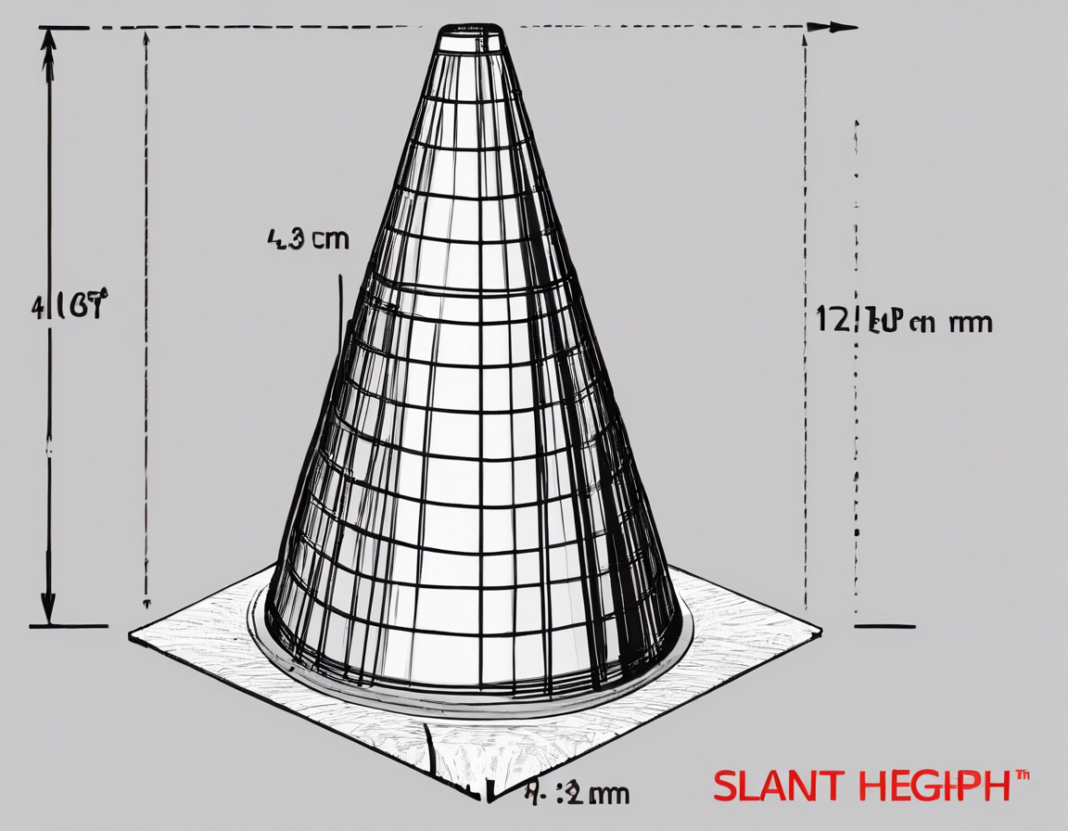When it comes to accurately measuring a cone, one of the key parameters that you’ll often need to determine is the slant height. The slant height is the distance from the apex (top) of the cone to any point on its circular base, passing through the side of the cone. It plays a crucial role in various calculations related to cones, such as determining the surface area and volume. In this article, we will delve into how to calculate the slant height of a cone accurately.
Understanding the Components of a Cone
Before delving into the calculation of the slant height, let’s first understand the basic components of a cone. A cone is a three-dimensional geometric shape that has a circular base connected to a single point called the apex. The distance from the apex to the center of the base is known as the height of the cone. The radius of the circular base is referred to as the base radius.
Calculating the Slant Height of a Cone
To calculate the slant height of a cone, you need to use the Pythagorean theorem, which relates to the three sides of a right triangle. In the context of a cone, the slant height, height, and radius form a right-angled triangle. The formula for calculating the slant height of a cone is given by:
[ \text{Slant Height} = \sqrt{\text{Height}^2 + \text{Radius}^2} ]
Where:
– Slant Height represents the distance from the apex to any point on the base.
– Height is the distance from the apex to the center of the base.
– Radius denotes the radius of the circular base.
Step-by-Step Calculation Process
Let’s break down the calculation of the slant height of a cone into a step-by-step process:
-
Determine the Height and Radius of the Cone: Measure the height of the cone, which is the vertical distance from the apex to the center of the base. Also, measure the radius of the circular base.
-
Square the Height and Radius: Square the values obtained for the height and the radius.
-
Add the Squares: Add the squared values of the height and the radius.
-
Calculate the Square Root: Take the square root of the sum obtained in the previous step to find the slant height of the cone.
-
Finalize the Calculation: Once you have performed the calculations, you will arrive at the accurate measurement of the slant height of the cone.
Importance of Accurate Measurement
Accurately calculating the slant height of a cone is crucial for various applications, including construction, engineering, architecture, and design. Whether you are determining the amount of material needed to construct a cone-shaped structure, calculating the surface area for painting or coating, or estimating the volume of a container, having precise measurements is essential for achieving optimal results.
Tips for Accuracy
To ensure the accuracy of your measurements and calculations when determining the slant height of a cone, consider the following tips:
- Use precise measuring tools, such as a ruler, tape measure, or calipers, to obtain the height and radius values.
- Double-check your calculations to avoid errors in squaring the values and calculating the square root.
- Round off the final result to the appropriate number of significant figures based on the precision of your measurements.
Frequently Asked Questions (FAQs)
Q1: Can the slant height of a cone be greater than the height?
A1: Yes, in a cone, the slant height is always greater than the height, as it represents the diagonal distance from the apex to any point on the base.
Q2: How does the slant height affect the surface area of a cone?
A2: The slant height directly affects the lateral surface area of a cone. A longer slant height increases the lateral surface area, whereas a shorter slant height decreases it.
Q3: What units are used to measure the slant height of a cone?
A3: The slant height of a cone can be measured in the same units as the height and radius, such as centimeters, inches, meters, etc.
Q4: Is the slant height of a cone the same as the diagonal of the cone?
A4: Yes, in a cone, the slant height is equivalent to the diagonal distance connecting the apex to any point on the base, passing through the side of the cone.
Q5: Can the slant height be negative?
A5: No, the slant height of a cone is always a positive value, representing a physical distance within the three-dimensional space.
Conclusion
Calculating the slant height of a cone accurately is essential for various practical applications where precise measurements are required. By understanding the relationship between the height, radius, and slant height of a cone, and utilizing the Pythagorean theorem, you can ensure accurate measurements for your cone-related calculations. Remember to follow the step-by-step process and tips outlined in this article to achieve reliable results in your computational endeavors.












